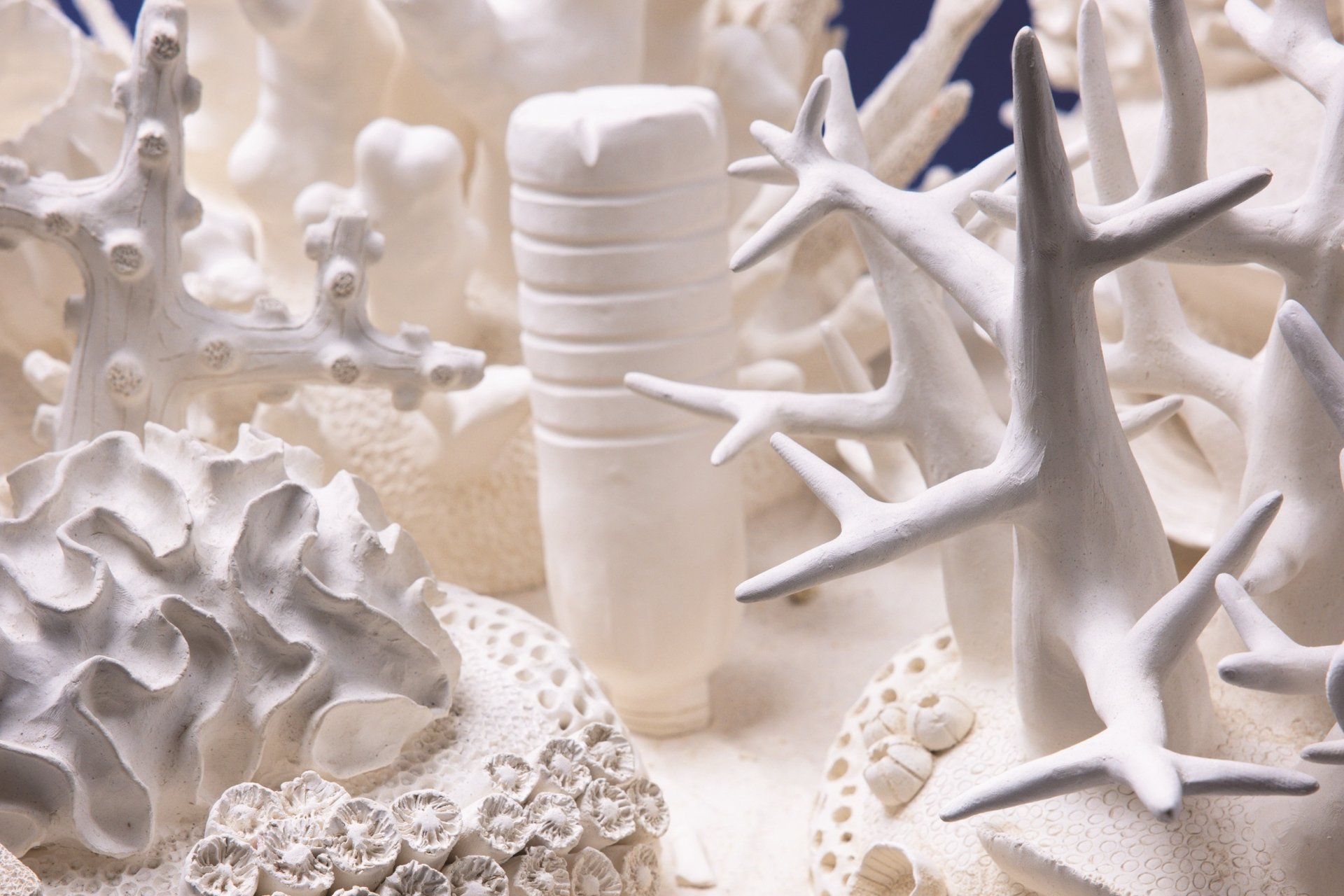Blending Art and Science
Into the Great Dying: Waters We Share, the latest site-specific installation at Faena Art’s Project Room from Brazilian environmental artist Beatriz Chachamovits, immerses viewers in the beauty, fragility and destruction of the ocean’s coral reefs.
Chachamovits’ acclaimed body of work is a response to extensive scientific research to understand the underwater world and the problematic phenomena caused by rising sea temperatures, ocean acidification, and plastic pollution. “After I do deep dives into scientific studies, talk to specialists and observe the corals first-hand, I create works that communicate what’s really happening inside the ocean,” explains the artist. “For example, the majority of my sculptures are white. This happened when I understood the significance of coral bleaching and its devastating repercussions.” Climate change has been identified as the leading cause of coral bleaching and once corals die, entire reef systems and all the wildlife they support become endangered.
The exhibition, which took more than a year to complete, features 17 coral structures made entirely by hand using a ceramic technique called handbuilding. A small piece takes around five days to build, while larger sculptures typically take more than two weeks due to the level of detail. “My goal is to create the feeling corals elicit by portraying the vast array of species, textures, and shapes that exist in a reef.”
To encourage viewers to become aware and reflect on the reality that how they walk on the earth impacts reef ecosystems, Chachamovits covered the exhibition floor with slabs of unfired clay hidden under a blanket of sand. As guests move closer to each sculpture, they’ll feel the clay crush beneath their feet. “When you invite the public to interact with the artwork, it becomes more deeply imprinted in their memory and hopefully stays with them long after they’ve left the exhibition,” explains Chachamovits. “My aim is that once people are back in the natural world, they’ll be more cognizant of how their behavior might be harmful to the environment and inspire action that cares for the oceans and coral reefs, and consequentially, the whole planet.”
“ I want people to be aware that the choices they make as individuals and the way we behave as a society influences the health of the ocean no matter where they live because we’re all connected through water.”
—Beatriz Chachamovits



